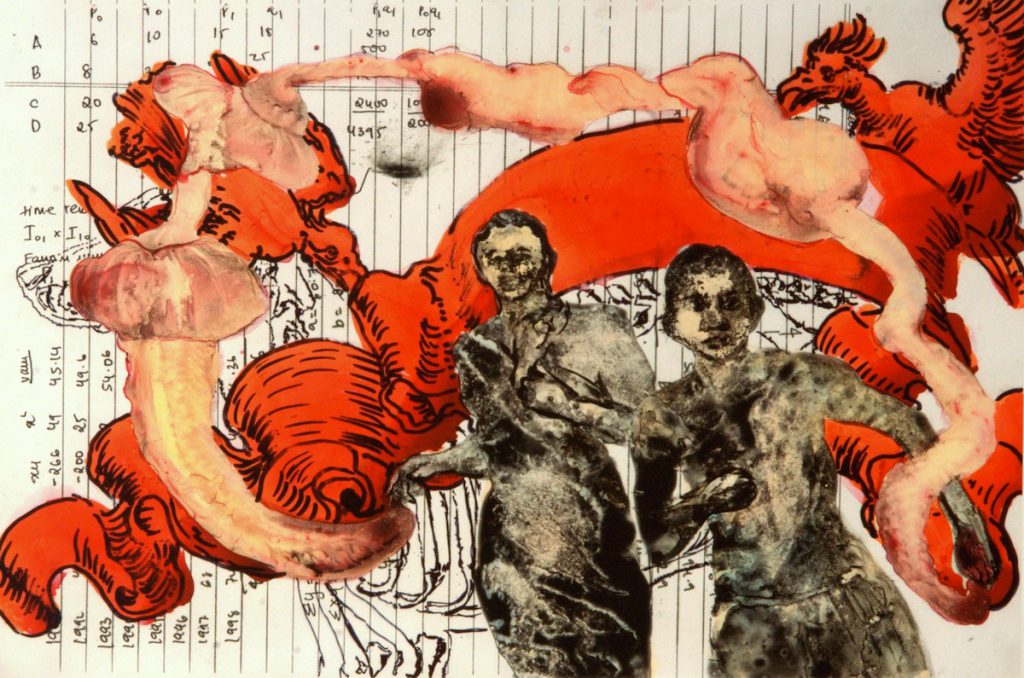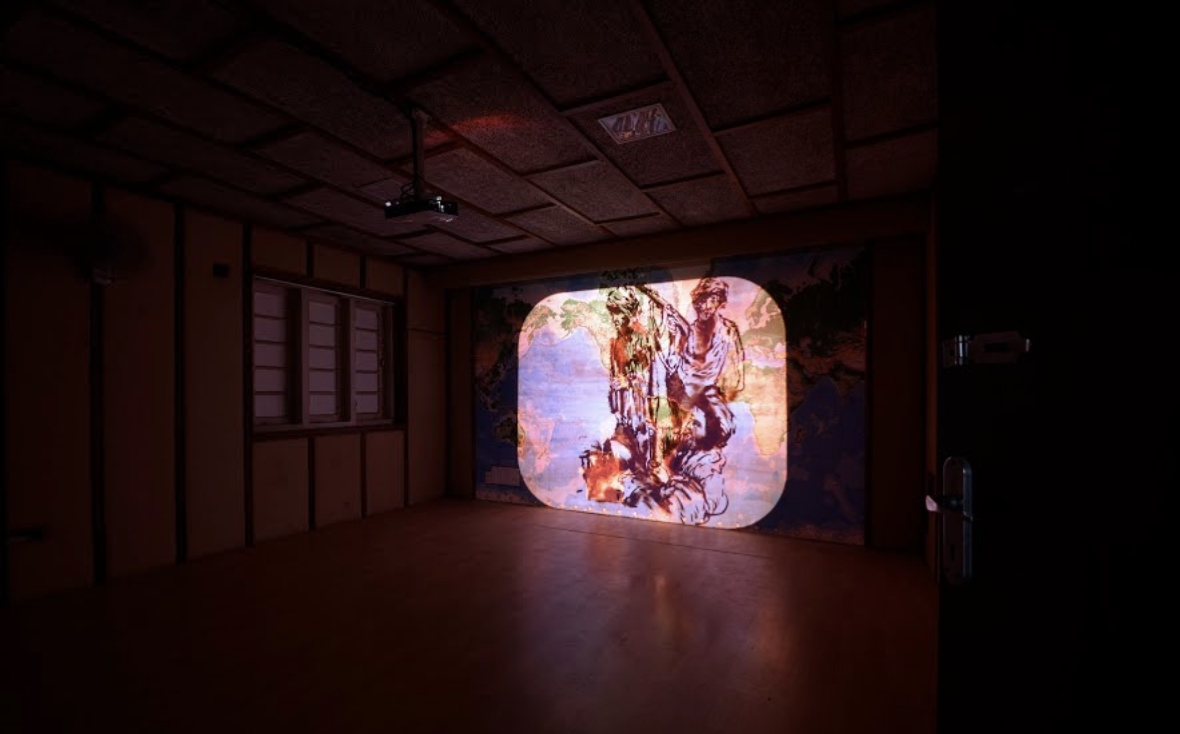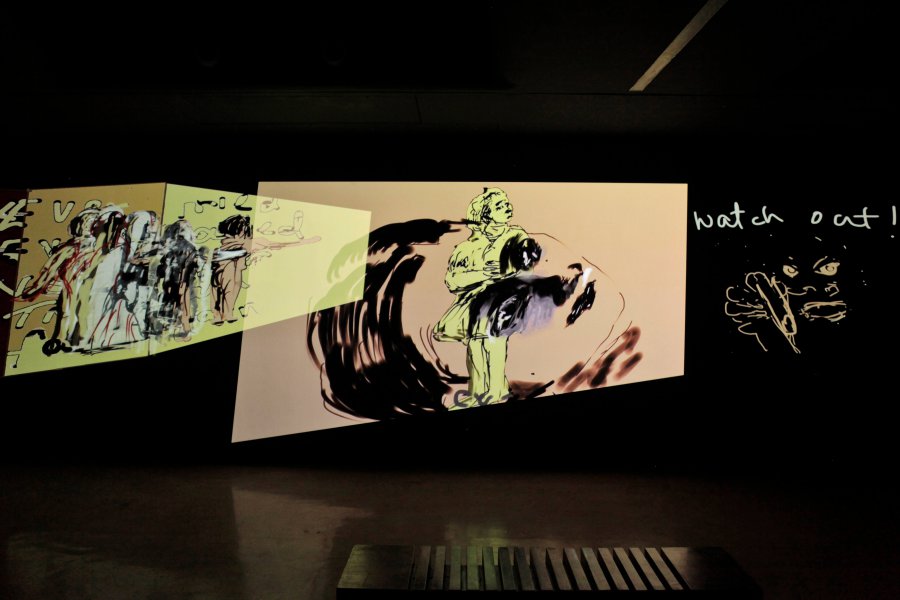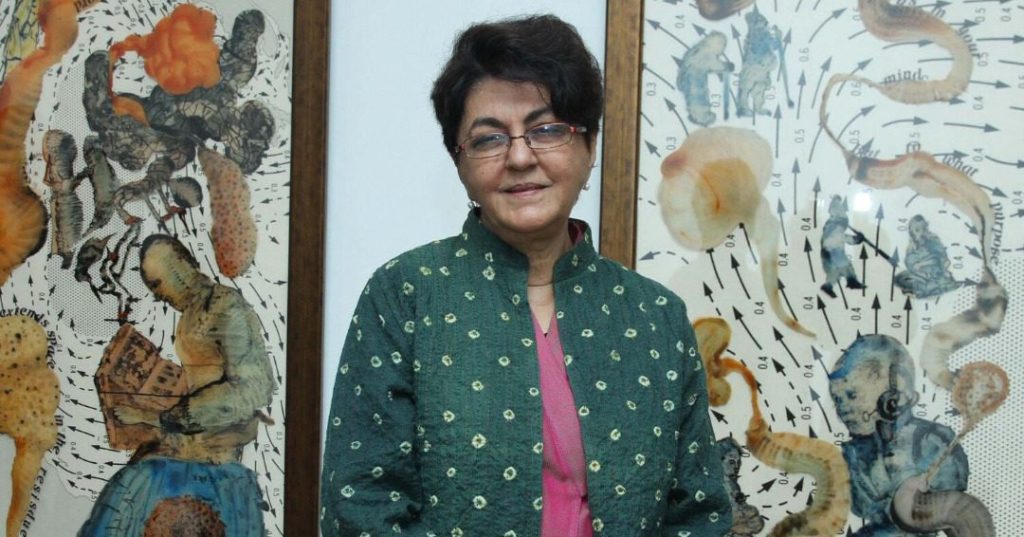Nalini Malani, a renowned artist hailing from India, has left an indelible mark on the art world through her innovative approach to video art and multidisciplinary practice. With a career spanning over 50 years, Malani has seamlessly blended painting, theatre, video, and illustration to create immersive installations that delve into politically charged themes of violence, racial tension, and feminism. Artist Nalini Malani’s groundbreaking work has garnered international recognition, including prestigious awards such as the Joan Miró Prize in 2019 the first National Gallery Contemporary Fellowship in 2020 and the Kyoto Prize in 2023. Let us delve deeper into Nalini Malani biography, chronicling her life and artistic journey which made her a household name.
Nalini Malani Artist – Early Years and Influences
Born in Karachi, British India (now Pakistan), Nalini Malani’s artistic journey was shaped by the significant historical event of the Indian partition. Her family, like many others, was forced to relocate and settled in Mumbai in 1958. It was in Mumbai that Malani began her formal artistic education at the Sir Jamshedjee Jeejeebhoy School of Art. Between 1964 and 1969, artist Nalini Malani honed her skills and obtained a Diploma in Fine Arts, laying the foundation for her future artistic endeavours.

During her time at the Bhulabhai Memorial Institute in Bombay, a vibrant multidisciplinary arts centre, Nalini Malani found herself amid a diverse community of artists, theatre actors, and musicians. This environment provided her with fertile ground for artistic exploration and allowed her to develop her practice among a range of cultural practitioners. This early exposure to a variety of art forms and collaboration with fellow artists greatly influenced Nalini Malani artwork.
Exploration of Film and Video Art
Following her graduation, artist Nalini Malani delved into the realms of photography and film. As the youngest participant in the Vision Exchange Workshop, she had the opportunity to experiment with photograms and different film techniques. It was during this period that she created two notable videos: ‘Still Life’ and ‘Onanism’ (both 1969). These early works challenged traditional notions of female sexuality by addressing the restrictiveness of tradition. In these Nalini Malani video art, she turned the camera inward, focusing on her items of clothing and books as they were thrown on a bed, creating a self-portrait of sorts.

Nalini Malani2012 – 2013
Courtesy: Google arts & Culture
In 1970, artist Nalini Malani was awarded a scholarship from the French government to study in Paris. This period proved to be a pivotal moment in her artistic and political development. Taking place in the aftermath of the May 1968 student protests and worker strikes in Paris, it was a time of intense political fervour. Malani actively engaged with political movements, working with illegal migrants, distributing leftist newspapers, and attending lectures by influential thinkers such as Noam Chomsky and Simone de Beauvoir. These experiences solidified her political convictions and further shaped her artistic vision.
Politically Charged Artworks
Nalini Malani’s artistic practice is deeply rooted in her personal experiences and the struggles of marginalised individuals. Nalini Malani art seamlessly integrates current news and reportage with references to Greek and Hindu mythology, creating massive installations and video works that she describes as “video plays” due to their theatrical nature. Through these works, artist Nalini Malani explores themes of social injustice, gender inequality, and cultural identity, extending her artistic practice beyond the confines of the white cube.
One of several notable Nalini Malani works that exemplify her politically charged approach is ‘Mother India: Transactions in the Construction of Pain’ (2005). This five-channel video play combines archival footage with her painted frames, shedding light on the shared experiences faced by women in India. The piece highlights the cyclical nature of violence against women and references both the Indian Partition and the 2002 Gujarat riots, which resulted in assaults against Muslim women. “Mother India: Transactions in the Construction of Pain” serves as a powerful commentary on the systemic issues that perpetuate violence and oppression.
Immersive Installations and Play with Light
Malani’s artistic practice has also encompassed immersive installations that blur the boundaries between art and the viewer’s experience. One of her notable series, ‘Wall Drawing/Erasure Performances’ (1992—ongoing), aimed to challenge the commodification of art. In these Nalini Malani paintings, she etched charcoal drawings directly on gallery walls, creating an immersive environment that she would later erase. An example of this series is ‘City of Desires’ (1992), which directly responded to the rise of Hindu right-wing nationalism. The installation featured ghostly images that seemed to haunt the walls of Mumbai’s Chemould Gallery, engaging viewers in a dialogue about political and social issues.
Light and shadow have also played a significant role in artist Nalini Malani’s work. In ‘In Search of Vanished Blood’ (2012), she used hand-painted motorized Mylar cylinders suspended from the ceiling to project videos. This multi-layered installation, originally showcased at Documenta 13, seamlessly integrated cultural and historical iconography with literary texts. By juxtaposing these elements, Nalini Malani created a complex exploration of intermingling traditions and the intricate layers of meaning embedded within them.
International Recognition and Exhibitions
Malani’s artistic contributions have been widely recognized and celebrated on the global stage. Nalini Malani works have been showcased in major exhibitions, including the Asia-Pacific Triennial in Brisbane, the Havana Biennial, the Sharjah Biennial, the Venice Biennale, and Documenta 13. These platforms have provided her with opportunities to engage with diverse audiences and participate in critical dialogues surrounding social justice and political commentary.

Courtesy – India Art Fair
In addition to group exhibitions, Malani has held solo shows at renowned institutions worldwide. The New Museum in New York, the Fukuoka Asian Art Museum, the Centre Pompidou in Paris, the Fundació Joan Miró in Barcelona, and the Whitechapel Gallery in London have all hosted exhibitions dedicated to her work. These solo exhibitions have allowed viewers to delve deeper into Malani’s artistic practice, providing a comprehensive exploration of her diverse body of work and inviting them to immerse themselves in her thought-provoking installations and video plays. For example, Nalini Malani Can You Hear Me has had a run in Mumbai (2019), London (2020), and Spain (2021).
Nalini Malani Artist — Visionary and Activist
Artist Nalini Malani’s journey as a pioneer of video art and multidisciplinary installations has significantly influenced the contemporary art landscape. Her ability to seamlessly merge different mediums, engage with mythology and current events, and address pressing social issues is a testament to her artistic vision and commitment to social change. Through her immersive installations and politically charged artworks, she challenges existing power structures, amplifies the voices of the marginalized, and fosters critical conversations about societal issues.
With numerous accolades and international exhibitions to her name, artist Nalini Malani continues to push artistic boundaries and inspire future generations. Her legacy as a visionary artist and activist serves as a reminder of the transformative power of art and its capacity to provoke change. By addressing social injustices, gender inequality, and cultural identity, Nalini Malani art resonates with audiences worldwide, urging them to examine their role in shaping a more inclusive and equitable society.
Image Courtesy – The Global Indian
The Absurd Surreal Female Experience in Mika Rottenberg’s Visual Art

Contributor





